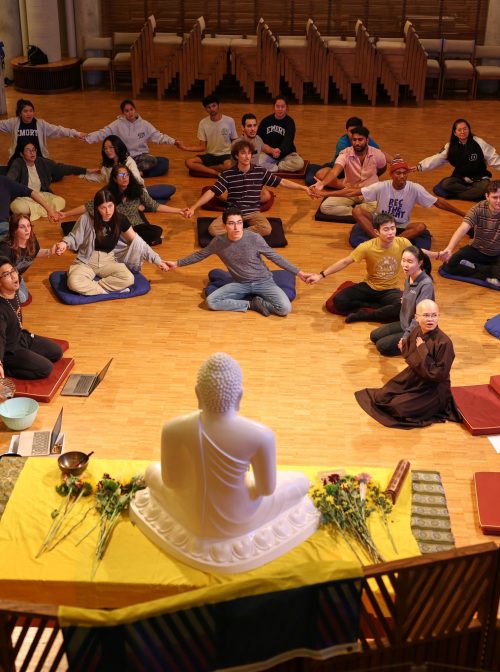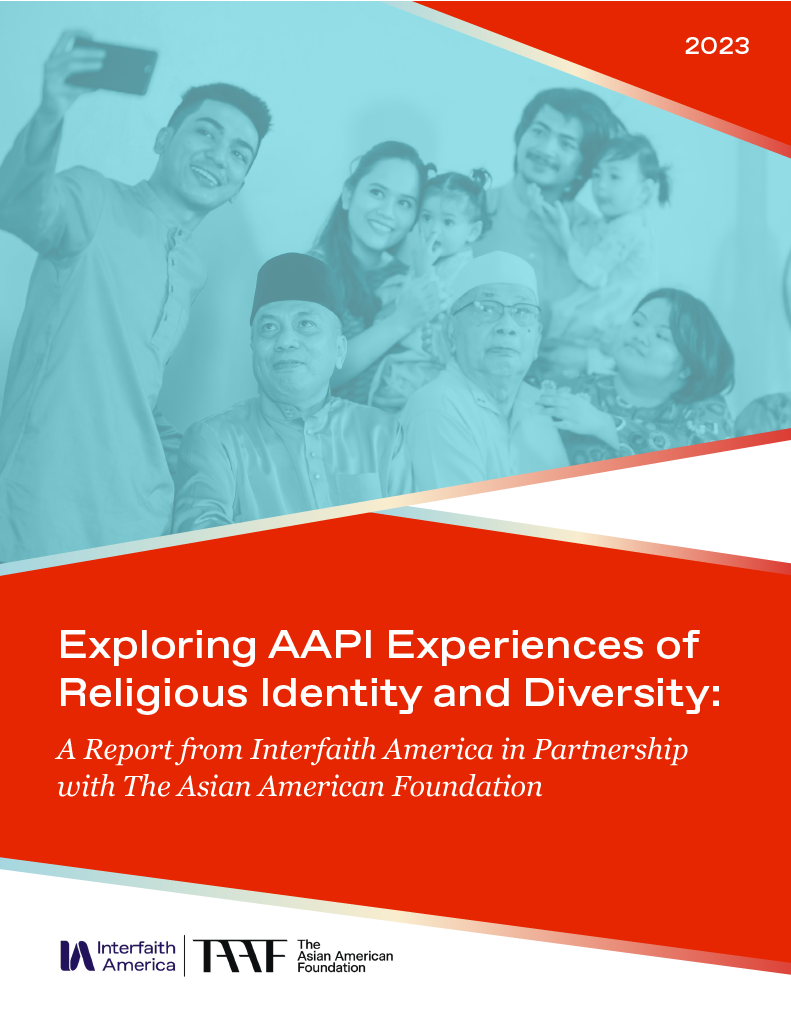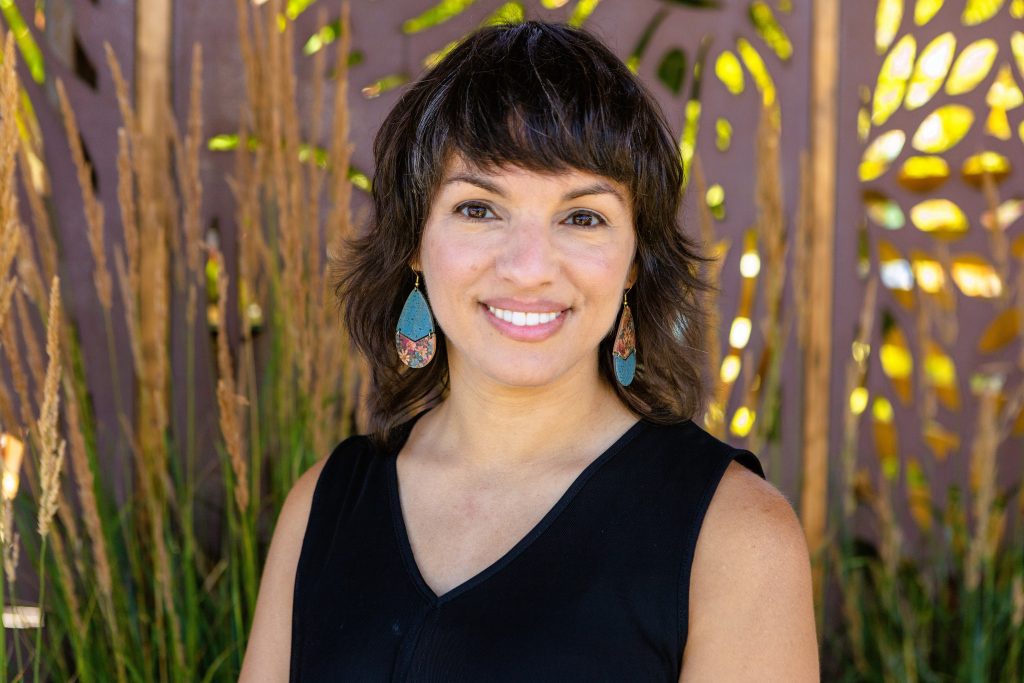Although Asian Americans and Pacific Islanders (AAPI) comprise a vital and multifaceted subset of the American people, they make up just 7% of the U.S. population and are often overlooked or misunderstood as members of our society.
Fortunately, recent strides have been taken to better understand the complex identities and lived realities of Asians living in the United States. Pew Research Center has embarked on a nationally representative, mixed methods study that led to the May 2023 report, “Diverse Cultures and Shared Experiences Shape Asian American Identities.” Organizations like The Asian American Foundation and Stop AAPI Hate also focus their research efforts on AAPI communities, investigating perceptions and attitudes toward Asian Americans and Pacific Islanders as well as acts of hate against them.
At Interfaith America, we wanted to examine how religion – as it intersects with race, ethnicity, culture, and family history – complexifies what it means to be an Asian American or Pacific Islander in the United States today. To this end, we conducted a robust qualitative study exploring AAPI experiences of religious identity and diversity. Ultimately, the research engaged 38 culturally, ethnically, and religiously diverse Asians from across the country who generously shared their stories through a series of interviews and focus groups. Our efforts focused not only on better understanding AAPI communities, but also on identifying ways to foster belonging and confront anti-Asian hate.
The narratives that emerged from our research include Su Yon Pak’s story of connection in multiple faith spaces and traditions and Walter Kim’s reflection on how navigating life between “Asian” and “American” has equipped him to be an interfaith leader. In Indian, Hindu and AAPI: Finding Common Threads in a Rich Tapestry, Anu Gorukanti ponders what it really means to be part of the AAPI community in the United States. And in Highlighting AAPI Voices in America’s Potluck Nation, Gorukanti’s fellow focus group participants share what delicacies – both literal and metaphorical – would best represent their distinct religious and cultural traditions at a potluck of America’s religious diversity.
Our study captured a multitude of narratives like these, which underscore the power of storytelling as a vehicle for deepening awareness of who comprises America’s religious landscape. The research also surfaced several important themes highlighting steps we can take to support and engage AAPI communities more deeply in the spirit of interfaith cooperation. For example:
- We need to reimagine how to conceptualize and articulate religious identity. For many Asian Americans and Pacific Islanders, the frameworks and language we use to discuss religious identity in the United States are insufficient. Finding more inclusive ways to express religious, spiritual, and secular perspectives – particularly for people who hold multiple perspectives in tandem – is imperative for advancing interfaith cooperation.
- Firsthand stories of AAPI religious identity and diversity in America need to be elevated. Too often, AAPI religious or spiritual traditions are represented in the public sphere by people who do not identify as AAPI. We ought to create spaces for Asian Americans and Pacific Islanders to tell their own stories and showcase AAPI religious identity and diversity in a way that curates appreciative knowledge about different AAPI communities.
- Multiracial coalition building can lead to individual and collective change. Coalitions have great promise for bringing AAPI and other racial identity groups together to address issues of common concern, including issues of bigotry and hate. Religious or spiritual communities are primed to be partners in coalition building given their intimate understanding of challenges their members face and the social capital they bring to mobilization efforts.
READ THE SERIES
Exploring AAPI Experiences of Religious Identity and Diversity

The recent Pew study revealed several key growth areas for fostering belonging among Asian Americans and Pacific Islanders: just 6 in 10 Asian American respondents felt connected to other Asians in the United States, and 90% perceived various AAPI cultures as more different than alike. Perhaps even more troubling, nearly one-third of U.S.-born Asians reported having hidden a part of their heritage from people who are not Asian to avoid being teased or discriminated against. Asians in the United States brought these realities to light – and we must also seek their insights to discern a path forward.
Promisingly, our research participants illustrated how religious identity can foster solidarity within and across AAPI communities – and how engaging AAPI religious identity and diversity can be instrumental in countering anti-Asian hate. Yet at the same time, the research conducted thus far makes clear there is even more to learn from Asian Americans and Pacific Islanders as we seek to realize a truly interfaith America.
For more about our research findings, as well as additional recommendations for practice, please read the full report.
This article is part of Interfaith America’s AAPI qualitative research and storytelling initiative, which explores Asian American and Pacific Islanders’ experiences of religious identity and diversity in the United States. Stories published as part of this initiative offer key findings from the research and spotlight AAPI changemakers across different religious, civic, and professional sectors.





